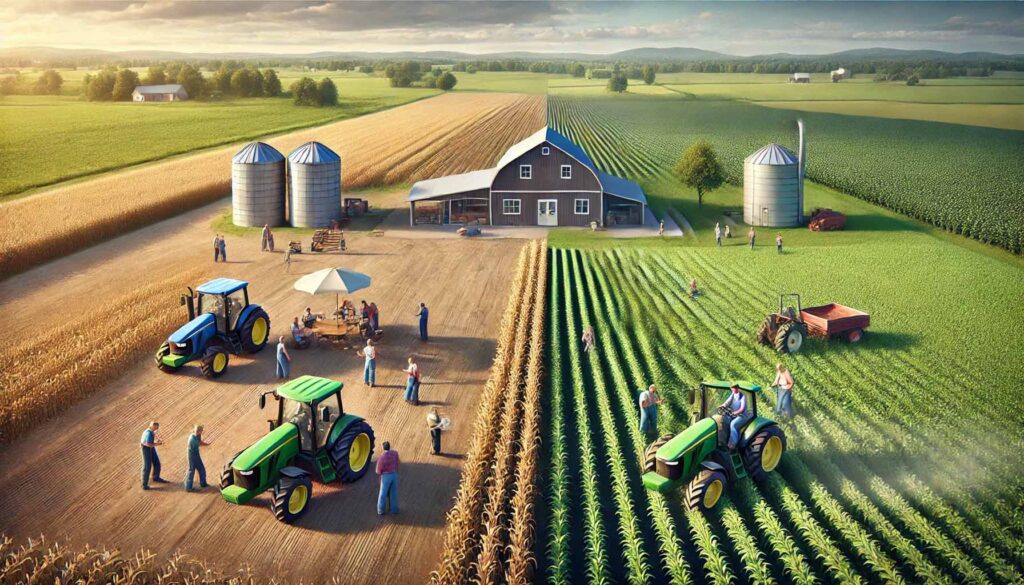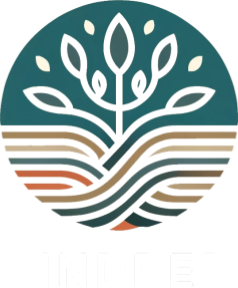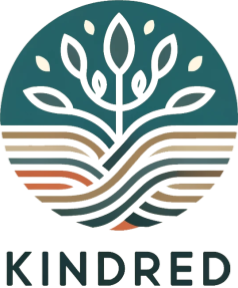When it comes to farm succession planning, one important decision farm owners face is whether to transfer ownership as a joint ownership or sole ownership. This choice can significantly impact how the farm operates, the relationships between family members, and even the long-term success of the farm. In this article, we’ll explore the benefits and drawbacks of joint ownership versus sole ownership to help you make an informed decision.

Joint ownership involves more than one individual holding ownership of the farm. This could include spouses, siblings, or other family members. Each person involved has a legal share of the property and responsibilities related to managing the farm.
Benefits of Joint Ownership
- Shared Responsibilities: Joint ownership allows multiple people to share the responsibilities of running the farm. Farming is hard work, and having more hands involved can ease the burden. Tasks such as managing crops, livestock, finances, and day-to-day operations can be divided among the owners. This shared workload can make running the farm more manageable, particularly if the owners have complementary skills or areas of expertise.
- Preserving Family Legacy: Joint ownership can help preserve the farm as a family legacy. By keeping the ownership within the family, multiple generations can continue to be involved in the farm’s success. This arrangement can foster strong family ties and encourage younger generations to stay involved in farming, knowing they have a stake in the operation.
- Financial Support: With multiple owners, there is often greater financial support. Each owner may contribute to the overall costs of running the farm, which can help with expensive investments, such as new equipment or expanding operations. Additionally, if one owner faces financial difficulties, the others can help carry the financial burden.
- Succession Planning Flexibility: Joint ownership can make succession planning more flexible. If one owner decides to step away or retire, the remaining owners can continue running the farm without significant disruptions. This flexibility can be especially helpful when planning for the future and ensuring a smooth transition between generations.
Drawbacks of Joint Ownership
- Potential for Conflict: One of the biggest downsides of joint ownership is the potential for conflict between co-owners. Decisions regarding the farm’s operations, financial matters, or long-term goals may not always align, leading to disagreements. Without clear communication and defined roles, these conflicts can strain relationships and negatively impact the farm’s success.
- Complex Decision-Making: With multiple owners involved, decision-making can become more complicated. It may be challenging to reach a consensus on important matters, such as crop selection, financial investments, or selling parts of the farm. If owners have differing opinions, this could delay critical decisions, causing operational inefficiencies.
- Equal Liability: In joint ownership, all parties are equally responsible for the farm’s debts and obligations. If the farm encounters financial difficulties or legal issues, each owner is equally liable. This shared responsibility means that even if one owner did not directly cause the problem, they could still be held accountable.
- Division of Profits: Another drawback of joint ownership is that profits must be shared among all owners. While this might not be an issue if the farm is thriving, it can become problematic during times of financial strain. Splitting profits among multiple parties may result in each owner receiving a smaller share than they would in sole ownership.
Sole Ownership: Full Control and Responsibility
Sole ownership means that one individual holds complete ownership of the farm. This person is solely responsible for all aspects of managing the farm, including making decisions, handling finances, and overseeing operations.
Benefits of Sole Ownership
- Complete Control: The most significant advantage of sole ownership is complete control over the farm. The sole owner can make decisions without needing to consult others, which can streamline operations and reduce the potential for conflict. This autonomy allows the owner to implement their vision for the farm without compromise.
- Simplified Decision-Making: With only one person making the decisions, there’s no need to negotiate with others or reach a consensus. This can lead to faster, more efficient decision-making, particularly when quick actions are required. The sole owner can make strategic choices based on their knowledge and experience, which can benefit the farm in the long run.
- Full Profit Retention: In sole ownership, all profits from the farm go to the sole owner. There’s no need to split earnings with others, which can be particularly advantageous during successful years. The sole owner has the freedom to reinvest the profits into the farm or use them for personal purposes as they see fit.
- Clear Succession Plan: Sole ownership often simplifies the succession planning process. The sole owner has the authority to decide who will inherit the farm or take over its management. This can reduce potential conflicts among heirs, as the plan is clearly outlined by the current owner.
Drawbacks of Sole Ownership
- Increased Workload: The downside of having full control is that the sole owner bears all the responsibility. Running a farm is physically and mentally demanding, and the sole owner must handle every aspect, from daily operations to financial management. This heavy workload can lead to burnout or overwhelm.
- Limited Support: Unlike joint ownership, where responsibilities and financial burdens are shared, sole owners must manage everything themselves. If financial issues arise or additional labor is needed, the sole owner may have limited support to draw from. This can place significant pressure on the owner, especially during challenging times.
- Risk of Isolation: Sole ownership can sometimes feel isolating, as there’s no one else to consult or share the decision-making process with. This lack of collaboration may lead to feelings of loneliness or stress. Additionally, the sole owner may miss out on valuable insights or alternative perspectives that could improve the farm’s success.
- Succession Planning Challenges: While sole ownership may simplify the decision-making process for succession, it can also create challenges. If the sole owner does not have a clear plan in place, transferring the farm to the next generation can be complicated. It’s essential to have legal documents and a detailed plan to ensure a smooth transition.
Conclusion: Which Is Right for You?
The decision between joint ownership and sole ownership ultimately depends on your specific situation and goals for the farm. If you value shared responsibilities and preserving the farm as a family legacy, joint ownership may be the better option. However, if you prefer full control and streamlined decision-making, sole ownership might be more suitable.
For farm owners considering succession planning, it’s essential to consult with trusted advisors, such as lawyers, financial planners, and farm consultants, to ensure you choose the best ownership structure for your farm’s future success. Whether you opt for joint or sole ownership, careful planning and clear communication with your family and co-owners are key to a successful transition.
Make sure to check out more articles in our News & Views section. Feel free to reach out any time to see how Kindred can help you and your trusted advisors manage the complex succession plan process with simple software – cutting time & cost of the current process by 50% or more.
Enter your email address below to stay in the loop on all things Kindred!
Follow Kindred on the socials...
Keep up with our journey on social - we're always posting something fresh!
Have questions about succession planning? Ask Kindley, our AI Advisor!


